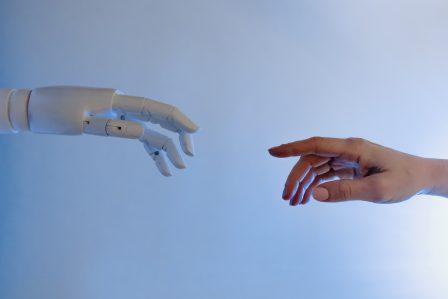5 Ways Artificial Intelligence is Changing The Face Of Education
Artificial Intelligence, or AI, is changing the face of many different industries. From manufacturing to marketing, many are finding that there’s a lot of benefit in the tech and how it changes their day to day operations. The same goes for education. Even though this is a field that’s mostly based on face to face contact, there’s a lot that AI can help with. Here’s how AI is going to change the face of education and improve how you deliver your work.
- Adaptive Learning
As an educator, you know that all students learn differently. In the classroom though, you’ll be expected to teach everyone in the same way, and that’s not going to work for all your students. How can you help all your students get the most out of their learning? That’s where AI comes in.
Adaptive learning software uses machine learning to understand how a student learns, and so adapts to suit their needs. You’ll see this being used in educational games and programs, so the student can get the very most out of them. When a student has learning materials that fit their needs, they’ll be able to get ahead.
- Task Automation
A teacher’s main job is to teach, but as well as this you have so many other jobs. Grading papers, checking homework, doing paperwork, and so on. There are so many administrative tasks, and it’s hard to balance this and time with your students.
AI can work to handle these tasks for you, freeing you up to spend more time with your students. One of the main benefits of AI is to automate tasks, and that can be very useful for educators.
- Educator Training
Just like in any other industry, educators need to be trained regularly to be kept up to speed. You’ll want to keep up to date on what’s happening in the industry, so you can give your students the education they need.
“AI programs can collect useful knowledge and training for educators, based on their needs” says developer Ben Solman, from State of Writing and PhD Writing. “It knows what to gather depending on the metrics the educator sets, so they can access it and get what they need without fuss.” When you have access to this information on tap, it makes training a lot easier.
- Student AI Assistance
It’s not just you as the educator who could use help through AI. Your students can get a lot out of it too. Typically, they can only get help if they come face to face with you, and that’s not always possible. That’s where AI can step in.
Good AI programs can give students access to all kinds of questions that they may have. When they have that assistance at their fingertips, it makes doing homework or getting help with a project a lot easier. In most cases, they’ll get what they need and get back to what they were doing.
- Complementing Classroom Teaching
AI will never be able to totally replace educators in learning, but what they will be able to do is complement what’s happening in the classroom. “A good AI will be able to monitor things, such as when students are missing certain questions” says AI writer Meredith Philips, an AI writer with Paper Fellows and UK Top Writers. “As such, it can alert the teacher and they’ll be able to start finding out where the problem lies.”
With that info, a teacher can then change up the way they teach, or cover older material again. As such, they can be sure students are getting everything they need from the lesson. Having an AI as a virtual helper means you won’t miss if anything does go wrong in the classroom.
There’s lots of ways that AI can be put to good use in the classroom, and beyond. Educators will be able to use it to complement their own teaching, whether it’s by searching for gaps in students’ learning, or freeing up time so they can work with students one on one.
Emily Henry is a writer for Paper Writing Service and Coursework Help. She covers AI tech in her work, and is a blogger for Boom Essays.



